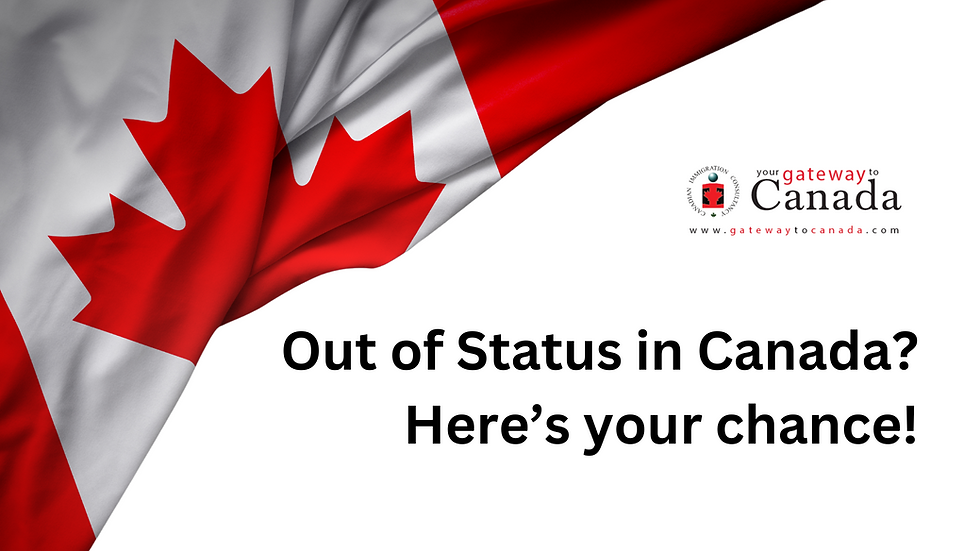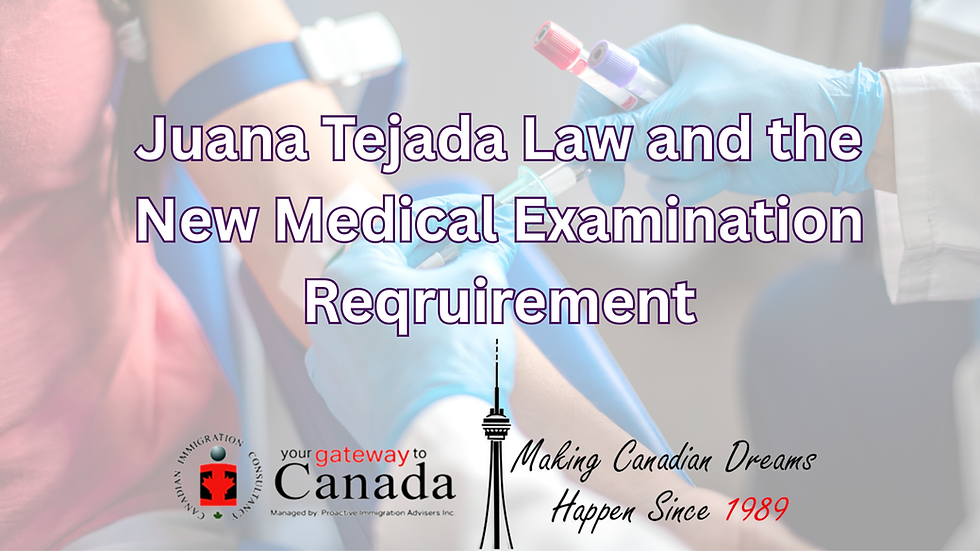Canada's New Caregiver Program: A Path to Permanent Residence for Those Without Status
- PIACORP Consultancy

- Mar 21
- 5 min read

Canada has introduced a new public policy that offers a lifeline for caregivers who have worked in Canada but do not have legal status. The new initiative under the Home Care Worker Immigration Pilots aims to provide a pathway to permanent residence for a select group of out-of-status workers—including those who are not authorized to work, have overstayed their temporary resident status, or have worked or studied without authorization.
This groundbreaking policy marks an important change for caregivers who have contributed to Canada’s caregiving sector but have faced challenges due to immigration status issues. If you’ve been working in Canada without proper authorization or have been in Canada as a visitor but lacked work authorization, this new public policy could open doors to permanent residency.
Here’s everything you need to know about how out-of-status workers can apply for permanent residency through the Workers in Canada stream under this new public policy.
What Does This Public Policy Mean?
This public policy is specifically designed for caregivers who have been working in Canada without legal status. The policy exempts a small group of applicants from certain requirements under the Workers in Canada stream of the Home Care Worker Immigration Pilots.
Normally, applicants to the Workers in Canada stream must have legal status in Canada and authorization to work. However, this public policy allows a group of out-of-status workers to apply for permanent residency, even if they do not meet the usual status and work authorization requirements.
Who is Eligible for the Workers in Canada Stream under the Public Policy?
To qualify for the Workers in Canada stream under the public policy, you must meet several key criteria:
1. You Are in Canada When You Apply
The public policy is only available to those who are currently in Canada at the time of applying. If you’ve been working in Canada but left the country, this policy will not apply to you.
2. Lack of Authorization to Work
You can apply even if you don’t have legal authorization to work in Canada or if you’re a visitor without work authorization. This policy allows you to apply even if you’ve worked in Canada without authorization or have worked or studied while your temporary resident status was expired.
3. Entered Canada Legally and Lived Continuously Since December 16, 2021
You must have entered Canada legally before December 16, 2021 and have lived in Canada continuously since then. This means you should have been physically present in Canada since that date.
4. You Had a Work Permit at Some Point
To qualify, you must have held a work permit at some point during the period you’ve been in Canada since December 16, 2021. Even if your status has lapsed or if you no longer have authorization to work, having held a work permit during your time in Canada is crucial to your eligibility.
5. You Are Not Inadmissible to Canada
You cannot be inadmissible to Canada for reasons such as criminality or security risks. However, you will not be considered inadmissible solely for having overstayed your temporary resident status, worked or studied without authorization, or having family members who have overstayed or worked/studied without authorization.
6. Accompanying Family Members
If you have accompanying family members who are also in Canada, they can be included in your application, even if they have overstayed their status or worked or studied without authorization. This allows families to reunite and apply for permanent residency together.
Other Requirements You Must Meet
In addition to meeting the criteria of the public policy, you will also need to fulfill the general requirements of the Home Care Worker Immigration Pilots program. These requirements include:
Work Experience: You must demonstrate at least 6 months of continuous, full-time, and relevant work experience in Canada within the last 3 years as a caregiver. You can apply through either the Child Care Pilot (for home child care providers or early childhood educators) or the Home Support Pilot (for home support workers and caregivers).
Genuine Job Offer: You must have a genuine job offer from an eligible employer who can provide full-time, continuous employment in Canada. The job must align with the National Occupational Classification (NOC)codes of the relevant pilot you’re applying for (Child Care or Home Support).
Language Proficiency: You will need to meet the language requirements in either English or French by taking a recognized language test, such as IELTS or TEF.
Medical and Criminal Checks: Like all applicants for permanent residency, you will undergo medical and criminal background checks to ensure you are admissible to Canada.
How to Apply
Once you confirm that you meet the eligibility requirements, you can begin the application process. Here’s how:
Prepare Your Documents:
Gather the necessary documents, such as proof of your work experience, training, job offer, and any supporting evidence.
Ensure you have proof of legal entry to Canada before December 16, 2021, and documentation showing you have been living in Canada continuously since then.
Submit Your Application Online:
You will need to submit your application online via the official immigration portal. Make sure to upload all required documents, including your Employment Information Form and any forms related to your status restoration if needed.
Employer’s Role:
Your employer will need to complete an Employment Information Form to verify the authenticity of the job offer. This form must be signed by your employer and submitted with your application.
Pay Application Fees:
At the time of submission, you will need to pay the required application fees.
Wait for Processing:
After your application is submitted, Immigration, Refugees and Citizenship Canada (IRCC) will process it. If your application is approved, you will receive an invitation to apply for permanent residency.
What Happens After You Apply?
Once your application is approved, you will be granted permanent residency in Canada. This status allows you to live and work in Canada without restrictions and includes the possibility of bringing your family members along under the family reunification process.
Conclusion
Canada’s new public policy offering a pathway to permanent residency for out-of-status caregivers is a significant opportunity for those who have been working in the caregiving sector but lacked legal authorization. If you’ve been in Canada since December 2021, have relevant work experience, and meet the eligibility criteria, this public policy could be your gateway to a permanent future in Canada.
To find out more about how to apply and get detailed information about the program, visit the official Canada Immigration website. Don’t miss this opportunity to secure your future in Canada!








Comments